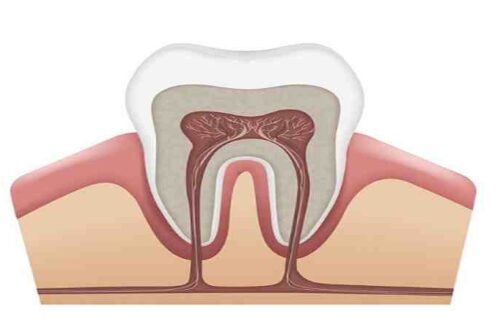In the digital age, having an online presence is vital for any business, including dental practices. A well-optimized website can increase visibility, attract new patients, and build a strong brand identity. But how do you ensure your site stands out amidst a sea of competitors? Enter Dental SEO, a tailored approach to search engine optimization that boosts your website’s ranking on search engine results pages (SERPs). It involves strategic use of keywords, quality content creation, and other techniques to drive more organic traffic to your site. However, it’s not just about attracting any visitors; it’s about attracting the right ones. Those who are actively seeking dental services in their local area. Thus, understanding and implementing Dental SEO can significantly enhance your practice’s online presence, and ultimately, its success.
Understanding Dental SEO
Dental SEO is a tailored form of search engine optimization (SEO) specifically developed for dental practices. It encompasses techniques designed to increase your website’s visibility on search engines like Google. Using the right mix of relevant keywords, meta descriptions, and quality content, dental practices can appear higher in search engine rankings. This process aims to attract potential patients who are searching for dental services in their local area. However, dental SEO isn’t just about driving traffic. It’s about attracting quality traffic. In other words, visitors are more likely to convert into patients. By understanding the basics of dental SEO, dental practices can enhance their online visibility, attract more potential patients, and improve their overall digital strategy.
The Importance of Keyword Research
Keyword research is an indispensable component of any successful SEO strategy. It involves identifying the terms your potential patients are using to search for dental services online. By integrating these keywords into your website’s content, you increase the chances of being found on search engine results pages (SERPs). Focusing on localised keywords can be particularly beneficial for dental practices. For instance, ‘dentist in London’ or ‘teeth cleaning in Manchester’ can help attract patients in your vicinity. Remember, however, that keyword stuffing (overloading your content with keywords) can lead to penalties from search engines. Therefore, it’s crucial to strike a balance between using keywords effectively and maintaining engaging, informative content. In summary, diligent keyword research can propel your dental website’s visibility and, in turn, increase patient acquisition.
On-Page SEO Strategies for Dental Websites
On-page SEO refers to the optimization of individual web pages to rank higher on search engines and attract relevant traffic. It involves enhancing various elements of your site, including content, images, and meta descriptions. For dental websites, on-page SEO could involve incorporating targeted keywords in the page title, meta description, and throughout the content. Additionally, ensuring your images have relevant alt tags and your site maintains a logical, easy-to-navigate structure can also contribute to improved on-page SEO. However, remember to avoid overstuffing keywords and always prioritize quality, informative content that adds value to your audience. On-page SEO is a crucial component of dental SEO, assisting in attracting potential patients and improving your website’s overall search engine performance.
Enhancing User Experience
A key aspect of dental SEO involves facilitating a positive user experience on your website. From easy navigation to fast page loading times, every detail matters. Websites that are intuitive and responsive hold visitors’ attention, encouraging them to explore and interact more, which can lead to higher conversion rates. Furthermore, search engines like Google consider user experience when ranking websites, so optimizing this aspect can boost your position on SERPs. This includes ensuring your site is mobile-friendly, as more people now access the web via smartphones. The goal is to provide a seamless, enjoyable experience for users, regardless of the device they use to visit your site. By enhancing user experience, you can attract and retain more visitors, setting the stage for increased patient conversions.
Creating Valuable Content for Your Audience
Content is at the heart of dental SEO. Creating valuable, informative, and engaging content not only helps in ranking higher on search engines but also builds trust with your audience. This could be in the form of blog posts addressing common dental concerns, informational pages about your services, or patient testimonials. Remember to integrate relevant keywords naturally within your content to enhance visibility. However, always prioritize the needs and interests of your audience over search engine algorithms. High-quality content caters to the queries of your potential patients and establishes your practice as a reliable source of information, potentially leading to increased website traffic and patient conversions.
Leveraging Social Media and Local Listings
Dental SEO extends beyond your website. Social media platforms and local listings can significantly amplify your online visibility. These platforms serve as additional touchpoints, directing traffic to your website. Regularly updating profiles on platforms like Facebook, Twitter, Instagram can increase engagement and amplify your reach. Similarly, registering your practice on local listings like Google My Business increases visibility among local searchers. Ensure your listings are accurate and up-to-date, with enticing descriptions and high-quality images of your practice. This multi-pronged approach creates various avenues for potential patients to find you, enhancing your overall digital presence and driving targeted traffic to your website.
Monitoring and Analysing SEO Performance
Monitoring and analysis are crucial for the success of any SEO strategy, including dental SEO. By tracking your website’s performance, you can gain insights into what’s working and what needs improvement. Tools such as Google Analytics can provide valuable data on visitor behavior, traffic sources, and more. You can also use Google Search Console to understand how your site appears in search results and identify any potential issues. Regular monitoring allows you to react quickly to changes, optimize your strategy, and ensure your website continues to perform well in SERPs. Remember, SEO isn’t a one-time activity; it requires consistent effort and adjustment based on performance data. Therefore, regular monitoring and analysis are integral to maintaining an effective and successful SEO strategy.





